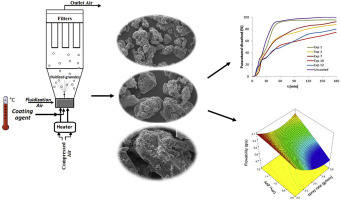- Home
- Blog
- News
- Basics
- Sources
- Agencies, Regulatory & Organisations
- CERSI Excipients Browser
- Excipient Report
- Excipient DMF List
- EXCiPACT Certified Companies
- Excipient Documentation
- Excipient EINECS Numbers
- Excipient E-Numbers
- FDA Inactive Ingredient List
- FDA GRAS Substances (SCOGS) Database
- IPEC Americas
- USP - U.S. Pharmacopeia
- Definitions
- Whitepapers / Publications
- Supplier
- Services
- Media
- Events
- 1st pharmaexcipients Poster Award
- Event Calendar
- Events featured by pharma-excipients
- 4th Annual Formulation & Drug Delivery Congress
- DDF Summit
- ExcipientFest Americas
- ExcipientFest Asia
- Global CompliancePanel
- International Conference and Exhibition on Pharmaceutics & Novel Drug Delivery Systems
- Formulation & Drug Delivery USA Congress
- Laboratory Medicine 2018
- Making Pharmaceuticals Europe
- Making Pharmaceuticals Exhibition
- Pharma Integrates
- PharmaExcipients China @CPhI China
- TTC Technology Training Center
- Jobs
- Online Sourcing
- Contact
26. May 2018
Hot-melt coating is a novel and cost-effective solvent-free coating technique. Commonly used excipients for hot-melt coating are lipid substances. In this work, modified fluidized-bed system was applied for coating, and additional components were used to melt and convey the excipient to the fluidized-bed apparatus. Granules containing 20% (w/w) paracetamol were coated with Precirol® ATO 5 at 9.1% (w/w) coating level. The aims of this study were to define a relationship between the three...
20. May 2018
The influence of particle morphology and size of alpha-lactose monohydrate on dry granules and tablets was studied. Four different morphologies were investigated: Two grades of primary crystals, which differed in their particle size and structure (compact crystals vs. agglomerates). The materials were roll compacted at different specific compaction forces and changes in the particle size distribution and the specific surface area were measured. Afterwards two fractions of granules were pressed...
25. November 2017
Due to its versatile properties, hydroxypropyl methylcellulose (HPMC) is largely used in many applications and deeply studied in the various fields such as pharmaceuticals, biomaterials, agriculture, food, water purification. In this work, vitamin B12 loaded HPMC granules were produced to investigate their potential application as nutraceutical products.
22. February 2017
Abstract Caffeine increases the analgesic properties of acetaminophen and therefore it is reasonable to use both substances together in one drug form in stronger pain. Currently, there are no commercially available pharmaceutical combination products containing acetaminophen and caffeine, which is present as granules. The aim of the study was to obtain twelve different granules with these therapeutic substances and determine the effect of various excipients on the quality of the drug form. All...
08. November 2016
Abstract Among various methods for drying of pharmaceutical granules in the pharmaceutical industry, fluidized bed drying is a frequently used method due to its high rate of moisture removal, excellent performance in solids mixing, and heat and mass transfer. As pharmaceutical powders are typically organic materials with high resistivity, they can easily be charged due to repeated collision and separation of particles along with particle-wall friction in a fluidized bed dryer. This phenomenon,...
27. July 2016
Abstract The development of process analytical technologies (PAT) can improve the efficiency and product quality during pharmaceutical manufacturing. The objective of the current research was to investigate the potential application of passive acoustic emission monitoring to detect changes due to lubricant addition and its dispersal in a V-blender. Trials were conducted with sugar spheres and two placebo formulations of pharmaceutical granules in a V-blender. Vibrations from acoustic emissions...
05. February 2016
02. February 2016
Taste-masking granules were prepared by coating granules with a taste-masking layer prepared by combining the water-insoluble and -soluble polymers, ethylcellulose and hypromellose, respectively. These granules showed an immediate drug release property after a suitable lag time. We confirmed that the dissolution behavior depended on the polymer ratio in the taste-masking layer. The result showed that the dissolution lag time and rate of the taste-masking granules were shortened and enhanced,...
24. January 2016
18. January 2016
Calibration of the Drucker Prager Cap (DPC) model parameters provides a means for a deeper understanding of the impact of granule composition on the compaction properties of dry granules independent of their solid fraction. In this study, monodisperse granules of mixtures of microcrystalline cellulose and mannitol (0%, 25%, 50%, 75% and 100% mannitol) prepared as small cylindrical compacts with well-defined size, shape and solid fraction (0.58) were used as model dry granules. More




